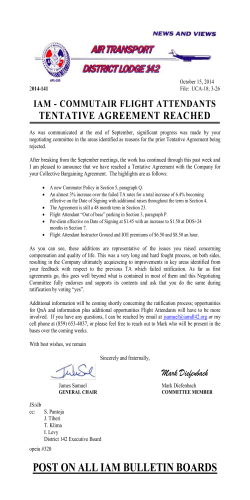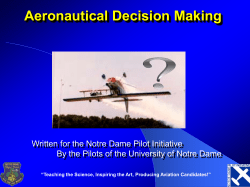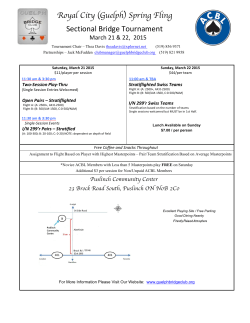
navy and marine corps aviation preflight indoctrination
–AVIATION OPPORTUNITIES IN EACH BRANCH OF THE MILITARY– NAVY AND MARINE CORPS AVIATION PREFLIGHT INDOCTRINATION (API) Since the Marine Corps is technically a branch of the Navy, the training for pilots and flight officers is similar for both services. Indeed, if you are a Marine student aviator, you’ll report to the Naval Air Station in Pensacola, FL, just like the Navy student aviators. The main difference is that Marine student aviators check in with and get support from the Marine Aviation Training Support Group (MATSG) that is located at the Naval Air Station. Two specialists make up the naval aviation team: the pilot and the flight officer. After 13 weeks at OCS, you’ll begin flight training as a Navy or Marine Corps officer and then continue training as either a pilot or flight officer. As a student pilot, you’ll study aerodynamics, aircraft engine systems, air navigation, flight planning, and meteorology before beginning basic flight training in a high-performance turboprop aircraft. By the time you’ve successfully completed intermediate and advanced pilot training, you’ll have achieved the rank of pilot. You’ll go on to perform a variety of missions, from surveillance and tracking of submarines to the collecting of photographic intelligence. As a student flight officer, you’ll receive specialty training on advanced tactical systems and complex communications equipment. Your course of study will be similar to that of the pilot, including aerodynamics, aircraft engine systems, and air navigation; you’ll also train in a specialized area such as radar intercept, advanced radar navigation, airborne tactical data systems, or advanced navigation. After the successful completion of your training, you’ll be designated as a flight officer and will report to a fleet readiness squadron for training in your specific type of fleet aircraft before ultimately reporting to your first operational squadron. The first phase of your training is called the Aviation Preflight Indoctrination (API) program. The API division provides commissioned officers in the Navy, Marine Corps, and Coast Guard, as well as selected international military students, with the basic skills and knowledge needed for primary flight training and basic naval flight officer training. Successful completion of this course is a prerequisite for primary pilot flight training and primary naval flight officer training. Aviation Preflight Indoctrination consists of 231 hours of instruction in the following areas: 26 ■ ■ ■ ■ ■ ■ ■ ■ Aerodynamics Aircraft Engines Air Navigation Meteorology Flight Rules and Regulations Aviation Physiology Physical Conditioning Land and Water Survival Training PILOT TRAINING Upon completion of API, you’ll be assigned to one of five Navy training squadrons for primary pilot flight T-34C Used in Navy Pilot Training CHAPTER 2 • LearningExpress Military Flight Aptitude Tests –AVIATION OPPORTUNITIES IN EACH BRANCH OF THE MILITARY– training using the T-34C, a single-engine turboprop aircraft. Primary flight training includes the basics of contact, instrument, formation, and aerobatic flying. After successfully completing primary training, you’ll be selected for your aviation pipeline and move on to the intermediate phase. Selection is based on personal preference, individual flight performance, and the needs of the service at the time. Student pilots will be selected for one of five pipelines described below. Upon completion of your intermediate training, you’ll be awarded your wings and will then proceed to specific fleet readiness squadrons for specialized training in either a fixed-wing or rotary wing aircraft. Here’s a list of the aircraft in each type: Fixed-Wing Rotary Wing F-14 Tomcat SH-60 Seahawk F/A-18 Hornet H-53 Sea Stallion A-6 Intruder H-46 Sea Knight Where Most Primary Pilot Training is Conducted— EA-6B Prowler H-2 Sea Sprite Whiting Field S-3 Viking H-3 Sea King P-3 Orion C-130 Hercules Selection is based on your grades in primary training and the needs of the service. The options are: E-2C Hawkeye C-2 Greyhound ■ ■ Now let’s take a closer look at each phase of pilot training. ■ ■ ■ Primary Flight Training Primary flight training is the initial stage of training, in which all students study the same curriculum. In this program, you’ll learn the fundamentals of flight using the T-34C Turbomentor turboprop aircraft. The majority of primary training takes place in Florida at Whiting Field Naval Air Station. At the end of primary training, you’ll enter one of five aircraft pipelines for intermediate training. Jets Carrier-based props Maritime props Helicopters E-6 strategic support Intermediate and Advanced Jets Intermediate jet flight training follows primary training if you are selected to fly jets.You will complete intermediate and advanced strike (i.e., jet) training at either Kingsville, TX, or Meridian, MS, and will learn the basics of jet flight in either the new T-45 Goshawk or the T2 Buckeye. You’ll prepare for carrier qualification through field carrier landing practices. LearningExpress Military Flight Aptitude Tests • CHAPTER 2 27 –AIR FORCE OFFICER QUALIFYING TEST (AFOQT)– 20. In Figure A-12 you are given the distances between the points on a route. If the flight takes 1 hour 23 minutes and 15 seconds, what is the average speed of the aircraft? a. 261.621 miles/hour b. 268.829 miles/hour c. 303.252 miles/hour d. 324.348 miles/hour e. 336.124 miles/hour Figure A-12 SECTION 14: ROTATED BLOCKS Directions: This test measures your ability to visualize and manipulate objects in space. For each question in this test, you will be shown a picture of a block. You must find a second block that is identical to the first. You will have fifteen (15) minutes to work the following problems. Questions: 15 Time: 15 minutes For sample Rotated Block questions, see page 58. 1. a. 174 b. c. d. CHAPTER 7 • LearningExpress Military Flight Aptitude Tests e. –AIR FORCE OFFICER QUALIFYING TEST (AFOQT)– 2. a. b. c. d. e. a. b. c. d. e. a. b. c. d. e. a. b. c. d. e. 3. 4. 5. LearningExpress Military Flight Aptitude Tests • CHAPTER 7 175
© Copyright 2025













